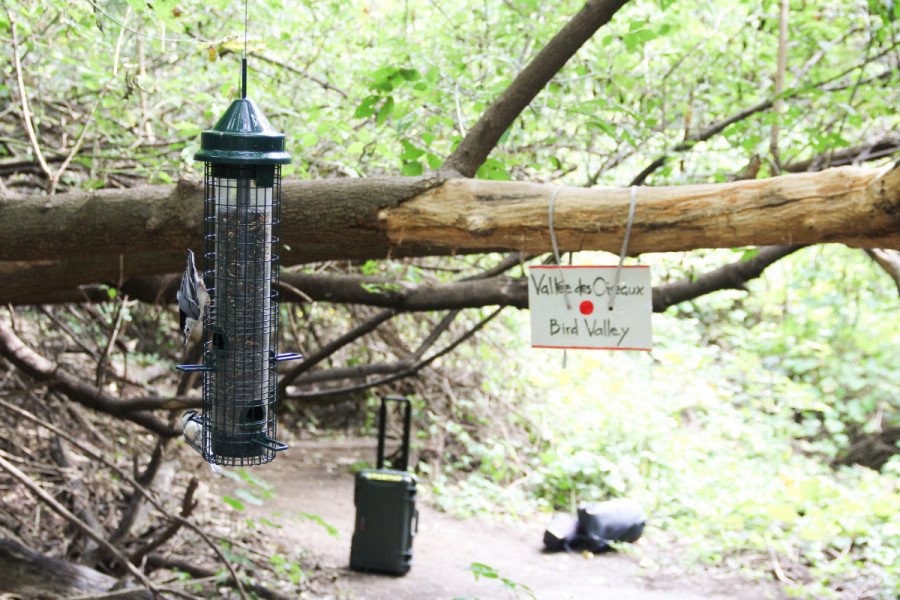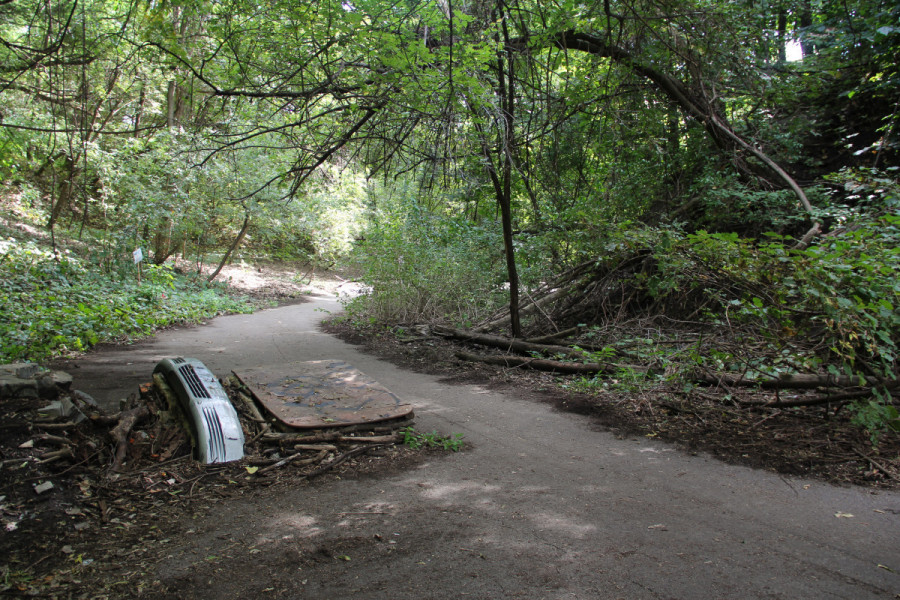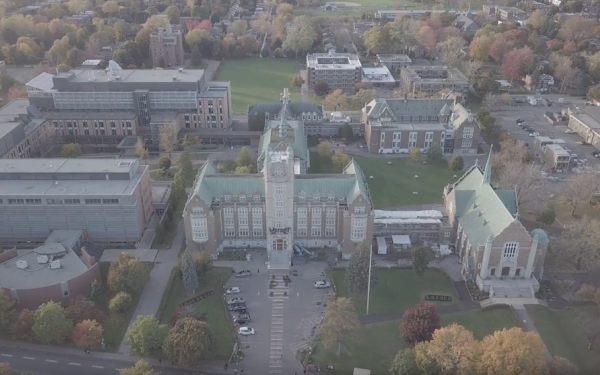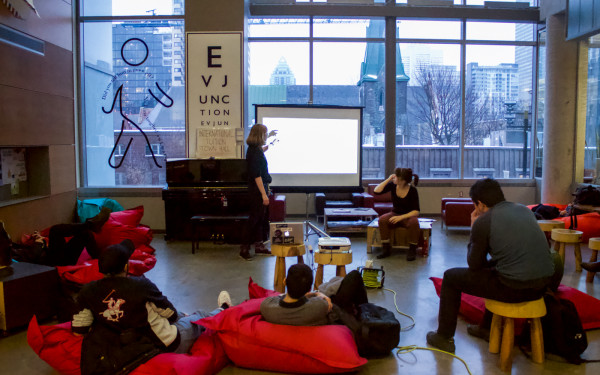La Falaise Saint-Jacques: From a Forgotten Dump to a Rebirthed Forest
A Group of Volunteers Transformed an Area Used to Dump Garbage Into a Community Forest
The Falaise Saint-Jacques is a beautiful, wooded area along the Ville-Marie highway. It’s hard to believe that this area was once a garbage dump. For decades, Montrealers remembered the Falaise Saint-Jacques as a dumping site. In fact, many of them used it for that purpose too.
“Residents from [Notre-Dame-de-Grâce] would dump their garbage, snow, tires, and even furniture they didn’t want too,” said Lisa Mintz, founder of the Sauvons la Falaise conservation group, a group dedicated to preserving the Saint-Jacques escarpment.
“Because there’s a whole highway and everything else between here and the rest of the Southwest, nobody cared about it,” she added, gesturing at the whole area.
A Strategic Sanctuary
The Falaise links green spaces in Westmount, Notre-Dame-de-Grâce, Montreal West, Lachine, the Southwest, and LaSalle. Despite covering just over 20 hectares, its position makes it a significant target in the effort to save and link green spaces.
It is home to some 65 species of birds, many of which use the escarpment as part of their migratory flight path. The escarpment is also a quiet refuge for local wildlife, such as squirrels, foxes and a large population of brown snakes.
According to Montreal’s Policy on the Protection and Enhancement of Natural Habitats, the Falaise is one of ten eco-territories on the Island of Montreal slated for priority protection and enhancement.
For Mintz and her group of volunteers, the quest to save the Falaise started in 2015, when she discovered that parts of the Falaise were being bulldozed for construction. The activist said the cleanup has been going on for years, but it was not her who started the motion.
“We are here for the Dalle-Parc [and] to support people who believe that we need an improved nature present in our city.” — Michel Tesler
Once during the 1980s, the area was cleaned and regreened. “Workers from the [union of the Commission de la fonction publique de Montréal] came here and cleaned it all up and put fences, but people cut holes in the fence and continued dumping their garbage,” Mintz pointed out.
Today, little garbage can be seen in the area and instead of fences, a bike road was stretched through the highway.
A Green Walk
On Sept. 17, residents of NDG, activists and a number of politicians gathered at the Falaise to celebrate the opening of the green strip at the foot of the Falaise. The strip acts as a buffer zone next to the CN railway tracks and Highway 20. It’s a multipurpose path for cyclists and pedestrians along forested areas and grasses.
The band was constructed by Transport Quebec, which finished the project in June 2022. But it was Mintz and other members of Sauvons la Falaise who pushed the city’s officials to make it happen.
“In the beginning, it was just a small group of senior citizens that started writing proposals and asking questions from the city officials and going to the council meetings,” said Hedi Dab, a member of Sauvons la Falaise.
Hedi said the construction of the green strip is excellent but what was promised to them was Dalle-Parc. The park was supposed to be a bike and pedestrian bridge and elevated park over Highway 20 that would link NDG to the Lachine Canal and LaSalle.
“We are here for the Dalle-Parc,” member of Sauvons la Falaise Michel Tesler said.
“I’m here to support people who believe that we need an improved nature present in our city,” Tesler added as he handed out pamphlets about the Falaise to people at the opening event.
The Dalle-Parc project was initially promised as part of the Turcot Interchange redesign but was later shelved. All attempts made by The Link to contact officials involved in the project have failed at the time of printing this story.

The Mission Continues
Although the majority of the Falaise is cleaned, activists say there are still people who secretly dump their garbage in it.
“The biggest problem we have right now is the dumping of garbage that comes from the businesses at the top of Saint-Jacques,” Hedi said. “People have been fined, businesses have been fined, but still garbage is being dumped. Last year, we pulled 200 tires out of the Falaise.”
As the winter approaches, another concern presses on: snow. The Falaise has been a snow dumping site for years.
“The problem with the snow is that it got salt and dirt in it. The snow also pushes down the trees, so it causes erosion,” Mintz explained. She added that invasive species are another threat the Falaise is dealing with.
“There are a lot of invasive species here. When the Falaise was regreened, several invasive plants threatened its biodiversity,” Mintz said, pointing at intertwined plants on the side of the road.
To tackle this issue, environmental volunteers from Mintz’s team have been involved in a project with the city of Montreal. Their main job is to detect invasive and exotic plant species that are not indigenous and native to Quebec. “The Falaise is in danger from these invasive species. Some plants have no natural predators here, and they change the soil chemistry and make it toxic for the native plants,” said Bruce Dawe, a volunteer member of the project.

An Educational Hub
Sauvons la Falaise is not only trying to preserve the area, but they are making it a place of education. Mintz likes the Falaise area as an environmental teaching ground and a place that school groups could visit to teach children about nature.
“I started environmental teaching education four years ago, and we do many things here,” Mintz added.
The Falaise has been the scene of many changes, from a forgotten garbage dump to a bike and pedestrian path. People might witness more significant changes in the Falaise, which could erase the memory of the dumping site from the minds of Montrealers.
This article originally appeared in Volume 43, Issue 4, published October 12, 2022.


_600_832_s.png)




_600_375_90_s_c1.jpg)